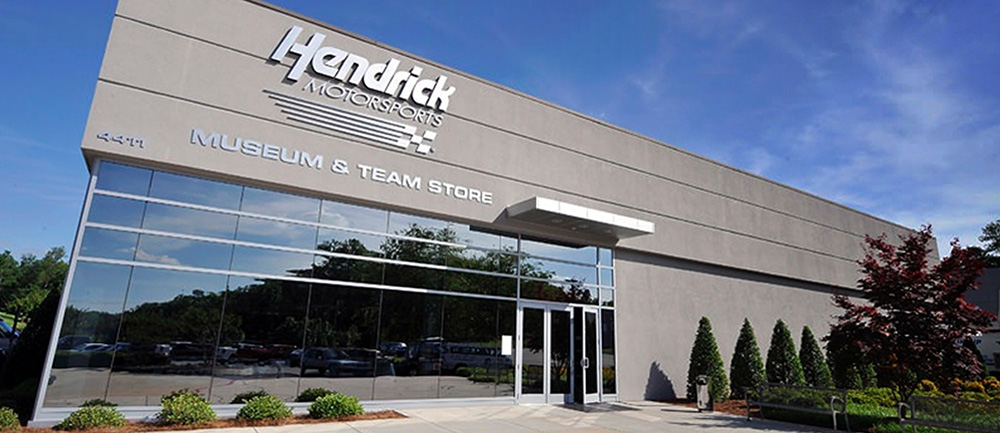CONCORD, N.C. – This weekend’s race on the dirt at Bristol Motor Speedway features a unique format for the NASCAR Cup Series, but not one unfamiliar to fans of sprint car racing on dirt.
The 2023 race at the .533-mile oval will mark the third straight year that the track has hosted the lone dirt race on the Cup Series calendar. It also marks the only time this season that the Next Gen car will race on dirt.
RELATED: Larson earns first victory of '23 at Richmond
Two practices were scheduled for Friday, April 7, but rain has washed out the on-track activity for that day. On Saturday, April 8, four 15-lap qualifying races will take place, starting at approximately 6 p.m. ET with coverage on FS2. The main event is on Sunday, April 9, which begins at 7 p.m. ET on FOX, PRN Radio and SiriusXM NASCAR Radio.
How will the heat races work? How is the lineup set? What are key dirt racing terms to know? We’ll answer that and more below.
HOW DO THE HEAT RACES WORK?
A random drawing held on Saturday will assign each of the drivers in the field to one of the four heat races and their starting spot in that event. Alex Bowman (starting second) and Josh Berry (starting seventh) will be in the first race. William Byron (starting fifth) will be in the second heat race. Kyle Larson (starting sixth) will be in the third heat race.
These heat races work a little differently than the ones for the Clash at the Coliseum. In the Clash heat races, the four winners were guaranteed to start the race from the first two rows. That will not necessarily be the case at Bristol.
HOW DO THE HEAT RACE RESULTS SET THE LINEUP?
In the 15-lap qualifying heats, only green-flag laps will count and there will be no overtime rule. Drivers will be awarded race finishing position points and passing points. A driver's combined total of those will set the lineup for Sunday's main event. The driver with the most combined points earns the pole position.
The race finishing position points are awarded from 10 points for first in each qualifying race to one point for tenth in each qualifying race. With only 37 entries for the Cup Series race, one heat race will have 10 cars, while the other three heat races will have nine cars. Passing points are the difference between the assigned starting position and finishing position. If a driver goes forward in the qualifying heat, they earn passing points. If a driver goes backward or finishes where they started, no passing points are earned.
WHAT IS THE RACE FORMAT FOR SUNDAY?
There will be three stages with stage one ending on lap 75, stage two ending on lap 150 and the final stage is scheduled to end on lap 250. In a departure from nearly every other race weekend, there will be no live pit stops.
WAIT, THERE ARE NO LIVE PIT STOPS? HOW DOES THAT WORK?
That is correct. There are no live pit stops. The non-competitive pit stops will take place at stage brakes with crew members changing tires and adding fuel as needed. Flat or damaged tires can be changed with approval from NASCAR. The running order will be frozen at the conclusion of each stage but if a driver elects to stay out during a stage break, they will line up ahead of those that pitted on the ensuing restart.
HOW HAS HENDRICK MOTORSPORTS DONE IN THE DIRT RACE?
In the two years of the Bristol dirt race, Hendrick Motorsports’ five top-10 finishes are the most in the series. Last year’s race saw Larson win a stage and finish fourth, while Bowman placed sixth and Chase Elliott was eighth. In the inaugural running in 2021, Byron finished sixth and Elliott was 10th.
RELATED: Larson scores top-five finish at Bristol dirt race
DIRT RACING TERMS TO KNOW
Bite: The amount of traction the tread holds in the rear tires. This allows for more grip on the dirt racing surface.
Bottom feeder: When a driver runs the lowest line of the racetrack.
Cushion: This is the dirt edge formed when multiple cars run on the top groove. As cars run a higher line on the track, the cushion moves up.
Dry track: When a dirt racing surface holds no or little moisture, it results in a dustier surface (this happened in the 2021 event that was raced during the day).
Hopping the cushion: This occurs when a car jumps above the dirt edge at the top of the highest groove. Doing this will upset the car and cause it to bobble up the track.
Slicking off: When a dirt racing surface becomes slicker over the course of an event, it gives a shiny, gray appearance.
Slide job: When a driver passes another driver by diving low and sliding up the track in front of the car that was just passed.
Tacky: When a dirt racing surface is wet, which holds moisture and makes the surface sticky.







